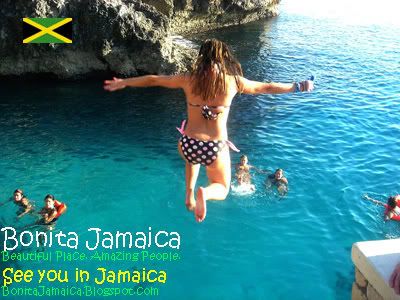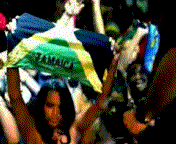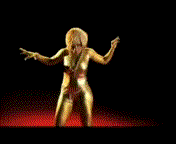 Ocho Rios, St. Ann, Jamaica, has the most attractions in the western Caribbean, as well as some equally enticing night spots. Ocho Rios is now a choice getaway spot for vacationers.
Ocho Rios, St. Ann, Jamaica, has the most attractions in the western Caribbean, as well as some equally enticing night spots. Ocho Rios is now a choice getaway spot for vacationers.Here are the top 10 must-see spots in Ocho Rios
10. Ocean 11
Owned by businessman Manley Bowen, this ocean-front property, comprising bar, restaurant and coffee museum, is a must-see. Ideally located beside the Urban Development Corporation pier, Ocean 11 is a favourite for cruise passengers and hotel visitors. And now that it boasts Latin night on Thursdays and its signature event, karaoke night on Tuesdays, Ocean 11 is a major part of the town's tourism offerings.
9. White River Valley
Surrounded by lush green vegetation and an ambience to die for, White River Valley is your ideal getaway spot, especially for couples yearning for some quality time. If you are all about picnics, river tubing and horseback riding, then look no further.
8. Fisherman's Beach
Fisherman's Beach is Ocho Rios' version of Helshire Beach in St. Catherine or Little Ochi in St. Elizabeth. Bluntly put, no other place in Ocho Rios offers quality authentic Jamaican seafood.
Whether you are a lobster, crab, fish, conch or sea-cat lover, Fisherman's Beach is definitely the place to go. Nestled neatly between the Island Village Shopping Centre and the Reynolds' Pier, it has come a long way in its aesthetic appeal to visitors.
7. John Crows
If you are into enjoying your meal at a streetside café while listening to a steady flow of local music then this is definitely the place to be. Clean, exciting and blessed with a top class atmosphere, John Crows is now a major hot spot. Like Fisherman's Beach, it is one of those 'new kids on the block' that should be around for a very long time.
6. Ruins at the Falls
Now here is a quality place that is hard to ignore. When you talk about location, ambience and natural beauty, it's not difficult to see why this establishment is considered one of the best that Ocho Rios has to offer. It continues to be the first choice reception spot for newlyweds.
5. Prospect Plantation
Wherever you find camels, ostriches, horses and enough wild life to make you believe you are somewhere in the tropics, then that has to be a must-see. No, it's not east Asia or Africa; it's Prospect Plantation in Ocho Rios, where nature in all its splendour awaits. While this place has not done much by way of local advertising, visitors will be pleasantly surprised at how wonderful a tour of this property can be. It is fun, it is exciting and an experience that visitors will not soon forget.
4. Dunn's River Falls
Still one of the most popular attractions in the Caribbean, Dunn's River Falls is a favourite for locals and tourists.
3. Margaritaville
The real happening spot in Ocho Rios is Jimmy Buffet's Margaritaville. Owned by two of the brightest business minds in the country, Brian Jardim and Ian Dear, there is no doubt as to the establishment that commands the bulk of the nightlife in Ocho Rios. Always very innovative, Jardim and Dear have created a top class signature attraction that has served the resort town very well.
2. Hard Rock Café
While the jury is still out on this new establishment, it should be able to outclass its competitors in terms of quality and international appeal. I suspect the best is yet to come from this internationally renowned restaurant and bar and if anything, it has raised the bar in terms of quality attractions. If you haven't been to Hard Rock Café yet, then hurry, it's worth going miles to see.
1. Dolphin Cove
This is without a doubt the number one attraction in Ocho Rios today. And with the new expansion on the verge of being completed, it's difficult to see how anyone can compete with Dolphin Cove.
Other Places to See:
Spring Gardens Seafood Bar and Grill, Bi Bi Bips, Evita's, Mama Marley's, Jerkin at Taj, and Coconuts.
Written by Garwin Davis, of the Gleaner (Jamaica)
See you in Jamaica






























